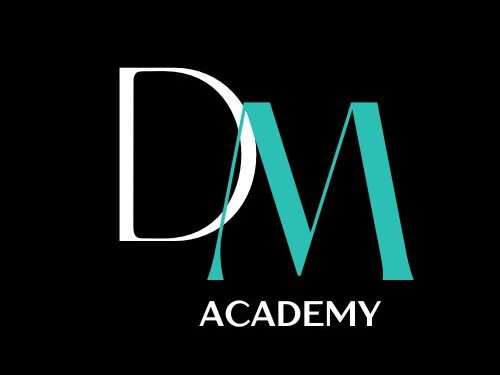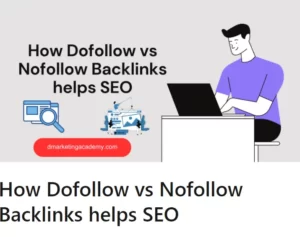Search engine optimization (SEO) is the most effective way to push your ranking and traffic in search engines. Most of us only focused on on-page SEO matters like primary and secondary keywords, internal linking, anchor text, etc.
But if you want to rank at 1st position on search engine result pages at a high competition, the secret magic of every SEO wizard is “off-page SEO”. Here we help you consolidate the off-page SEO checklist with 8 techniques. Let’s get started!
What Is Off-Page SEO Checklist?
Off-page SEO checklist is a list of activities to optimize the external ranking factors, that help to increase the website ranking in the SERP and build high authority for your website in that niche.
It includes activities like building links from authoritative websites, engaging with your users on social media, and other strategies. This is most helpful to the people when their competition is high. Off-page SEO strategies are the best weapon to defeat them.
Off-Page SEO Checklist for Site Optimization
Most people are stuck at the earlier stage when they are working out of the website. This off-page SEO checklist will help you to handle the barriers.
Build a High-Quality Backlink Profile
First, we started with backlinks. Backlinks are links from third-party websites that point to your website pages. This is known as the link-building process. When a page has your website link, Google considers that your content is highly valuable and qualifiable.
According to Neil Patel, backlinks are valuable when they are from,
- highly relevant and authoritative websites.
- Embedded in the content.
- And from the local site if you are targeting a specific location.
To make sure this you must know your website’s backlink profile. So do the backlink audit in any SEO tool like Semrush, Ahrefs, or Moz. From this, you will get the details about the total number of backlinks, referring domains, and anchor text distributions.
After the analysis, you may remove the low-quality websites from your backlink list. Because this will harm your website’s trustworthiness. Also, remind to use variations of keywords as anchor text.
If your content is about any infographics, webinars, case studies, checklists, or expert interviews that encourage natural link-building.
Here are some other white hat SEO techniques to build your backlinks,
- Get backlinks from the resources page
- Use the missing backlinks from competitors
- Regain lost backlinks from your profile
- Link building by images
- HARO link building
- PR Linkbuilding
Be Active in Social Media
Presenting yourself on social media is one of the effective ways in this off-page seo checklist. When you create engaging content in social media that makes the customers interact with your brand.
This leads to getting qualified backlinks, drives referral traffic, and authoritativeness. So whenever you receive likes, shares, and comments it passes a positive signal to Google. This shows your content is valuable all over the web.
Some best practices for social media off-page SEO to position your brand,
- Choose a social media platform that is more relatable to your target audience. It varies on your target audiences and their preferences. So make your choice related to your target audience.
- Create your content more useful and related to your audience. Podcasts, articles, webinars, infographics, and user testimonials are the most valuable content. And always maintain a brand’s consistency in all channels.
- Well-defined your growth strategies to improve your followers. So encourage your customers to follow you on social media.
- Actively encourage your audience to engage. This is by sharing content, asking questions, replying to comments, involved in related discussions. This builds a rapport with your audience.
Encourage Local SEO Investment
If you have a physical business, then you must invest in local SEO. Activities to improve the search engine visibility for local business is known as local SEO. This helps you position your product for the local audience.
Following the best tips for local SEO to make it more effective.
- Ensure your business listing on Google Business Profile (formerly known as Google My Business), helps to show your business on Google Local Pack Listings and Google Search and Maps.
- Use your business name, address, and phone number(NAP) in that listing. Additionally add photos, reviews, local content, the latest information, and unique things about your business. If any changes happen you must update this at listing sites.
- To make your local SEO effective, collaborate with local influencers, and bloggers to improve your local presence.
- The foremost thing is to avoid creating citations in irrelevant directories. Go for the industry-specific directories, review sites and social media, it helps to boost credibility
- Do a proper SEO audit for local listing. In this process you need to analyze your website crawlability, your Google Business profile, citations audit, and competitor analysis.
- There are so many tools like Whitespark, Moz Local, Yext, etc. This helps you to track your rank automatically, do local keyword research, find out competitor insights, and monitor your performance.
Share Your Content on Other websites
Guest posting is another valuable option in the off-page SEO checklist. Based on the state of link-building study by Aira, 47% of experts preferred this strategy for link-building. This helps to reach different types of audiences and boost your authority in that specific market.
Some third-party websites allow you to post a blog on their websites. Most of them have separate guidelines for blog posting. This includes the number of words, number of links, topics that need to be written, etc.
To make your result better, use these best strategies for guest posting,
- Set up your goals for the guest posting. It may be driving traffic to a specific landing page, positioning you as an expert, building awareness, or increasing backlinks.
- Find out a list of websites that allow for guest posting by using Google search operators. And reach out to them.
- Understand the website’s guidelines and the way of delivering their content.
- Choose a topic that is relevant to the brand’s niche and targeted audience preferences to make your content more valuable.
- After posting a blog ensure to track the traffic and social shares of it. This practice helps you find out which website has the most impact.
Engaging in Forum Discussions
Forum posting is participating in an online discussion on a specific topic. This is another activity in the off-page SEO checklist. The main goal is to drive traffic to your site. Further, it shows you are expertise in that niche to your audience.
Some of the best practices to make your posting better,
- Join a forum that is related to your niche, to make a connection with the people. You must adhere to the guidelines of the forum, otherwise, your account will be terminated. Join in a do-follow forum.
- Try to answer and give your suggestions to people’s queries, and post on threads.
- Avoid promoting your content. The main purpose of forums is to provide a quick and valuable solution to their problems. So to stay on that.
- Choose a relevant keyword, that helps the search engine and users to find your post to find your solution.
Establish a Connection With Influencers
Collaborating with influencers who have a larger audience in your particular niche is the next part of your off-page seo checklist. Rapport with influential bloggers, websites, and social media influencers. This helps to reach a new set of audience, make social proof, and increase brand awareness.
How do reach out to them perfectly? Here are the guidelines,
- Find and fix your goal for this reaching out. What do you want to achieve through this? High traffic or more number of leads or else brand awareness. To make this clear helps you to reach out perfect influencer.
- Find the influencer using a tool like Buzzsumo. Make sure the credibility of the influencer, and audience engagement with their content, and if they are suitable to your brand.
- After reaching them, convey the value received from this collaboration and content ideas.
- Once after the negotiation and content posting, track the performance of the campaign and analyze the results you get.
Respond to the Customer's Reviews
Most people ignore or forget to respond to customer’s reviews. You may think “Is it necessary to respond to the reviews?”. According to Google when you actively reply to the reviews it shows that you value your customers and their feedback.
So to maintain the brand’s reputation, auditing your users’ reviews and feedback is the next checkbox in this off-page SEO checklist. Follow these tips to make your response more valuable,
- There are so many platforms available for reviews. Like G2, Google Business Profile, Capterra, Yelp, etc. Determine which one is suitable for your business.
- Through the review audit, you can find the strengths and weaknesses of your business. This will help to improve our product/service.
- Make sure to respond on Time and to negative feedback, this makes you a professional person.
- And don’t hesitate to handle your negative reviews.
- Try to provide an instant solution or valuable suggestion for the reviews to help you stand out from the competition.
Wrap up
SEO is a continuing and evolving process. From this off-page SEO checklist, you may understand that,
- Link-building helps to improve your authority
- Social media presence, and rapport with influencers making brand awareness,
- Guest posting and being active on forum sites give a signal to Google that your content is more valuable.
Then why are you waiting for? Let’s start your off-page audit!
Author
-
About the author: A Digital marketing expert with hands-on experience in On-page SEO, Off-page SEO, Content writing, PPC, social media, and WordPress. Above all, My hobby is poetry aficionado. My favorite books are "The power of your subconscious mind" and "Do Epic shit".





